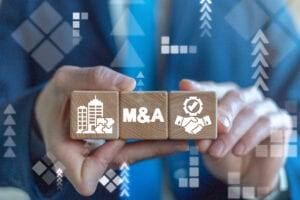
As you already know, selling recurring revenue services offer unique benefits over traditional time and materials, hardware resale and project-based business models. Selling remotely-provisioned and managed IT, cloud and cybersecurity services dramatically reduces onsite service requirements or truck rolls to On-Board new clients and provide ongoing service; with a few exceptions before go-live, such as installing any necessary on-premise hardware appliances such as Firewalls.
But with careful planning and preparation, even these appliances can be shipped to a customer, and once they’re plugged into the network, set up remotely. And while the implementation and ongoing management of these services is different than other business models, so is its value proposition that promises near-anywhere availability of services; which is becoming more and more platform independent, influencing a more app-based experience for businesses and users.
Selling Recurring Revenue Changes Everything
As an MSP, your enhanced messaging, collaboration and data accessibility, cloud and cybersecurity services are tailor made for distributed, remote workforces. Due to these factors, marketing and selling these services is simpler and yields much higher overall margins than traditional time and materials and project-based IT services.
When preparing your business to be sold, the greater the percentage of recurring revenue against total overall revenue you generate; and the longer the term of your recurring revenue agreements, the greater your potential company valuation. But this is simply one driver of business valuation.
Why Sell?
Let’s discuss the reasons you may want to sell the business you’ve built – either now, or in the future. This decision can be based on numerous factors, including multiple, concurrent factors. Your business may have reached the highest operational performance level in its history, influencing you to engage prospective buyers due to the potential to command the highest valuation possible.
Or perhaps you are approached with an offer that is simply to good to refuse. Maybe your goal is to fund your retirement with the proceeds of a sale. Or perhaps you’re simply ready for a change of pace or lifestyle, and are ready to take some risk off of the table. You may be interested in investing in, or starting another business opportunity, leveraging some of the sale proceeds to fund your new entrepreneurial journey.
And while these all sound like positive reasons to sell with a high upside potential, there are less positive reasons that may drive your decision to sell your interest in the business, such as problems with a business partner or group of partners, or sudden and unexpected health or other personal or family issues. And finally, you may choose to sell and exit because you feel you’ve taken the business as far as you are able, and if you wait too much longer, your ultimate valuation will suffer.
As a friend of mine and M&A advisor always says, “you should always run your business like you’re selling it”, because in his experience; notwithstanding the minority, the majority of sales he’s worked on have been due to an unanticipated circumstance facing the seller, like an unexpected offer being made, partner problems, or health or other personal issues.
What Are Buyers Looking For?
So what are buyers looking for if you intend to sell, and what can you do to not only meet, but exceed their expectations, to drive a higher offer for your business? According to Forrester, desirable acquisition targets embody the following traits: a solid management structure that allows the business to operate independently of you – the owner.
Consistency in the business in terms of controlled, sustainable growth with low staff and customer churn. Consistent and steady revenue growth, skewing towards higher recurring revenue. Diverse revenue sources comprised of a mix of subscription-based and project-based services, with a focus on professional, managed IT, cloud and security services.
And especially attractive are niche- or vertical-market line of business expertise and AI and BI competencies. And solid, consistent cash flow with high on-time receivables collection and a low percentage of uncollected revenue.
What Is Your Business Worth?
To put a fine point on this, your business valuation can be influenced by many factors, not the least of which is what your buyer is ultimately willing to pay for it. But their decision can be driven by their need. If they are a financial buyer, then financial performance will be the lens they apply when formulating their offer.
Purely financial buyers will lean heavily on valuing your company based on a multiple of your EBITDA (Earnings Before Interest, Taxes and Depreciation) performance. And if they are not familiar with recurring revenue business models like managed services, cloud or managed security, their valuation may skew lower than you may be willing to accept.
A strategic buyer will value your organization differently than a strictly financial buyer. If you enable them to penetrate a niche or target vertical; or geography, or specialize in an emerging technology that they are after, their offer will reflect the importance of your company to them. And if they understand the influence that recurring revenue has – to overall compound business revenue and profitability over time, their offer will skew higher than a purely financial or geographic-focused buyer.
Again, there are other factors that weigh in on overall business valuation, but the difference between how a financial and strategic buyer values an investment is important to understand.
How Will Your Business Be Valued?
Business valuation is not simply based on a buyer’s approach; be it financial or strategic, or simply on gross revenue or percentage of monthly recurring revenue or annual recurring revenue, but also on profit and cash flow. When valuation is based solely on profit and cash flow, the result is a formula based on a multiple of EBITDA.
Valuation may also be based on gross revenue multiples. Other methods possibly used are discounted cash flow (also known as income capitalization) and recurring revenue multiples, as we already discussed. Normally 2 or 3 methods are combined to arrive at a business valuation, including comparing the last 3 years of your company’s certified financial data, with an average taken to inform a final offer to buy.
What Is The Business Valuation Criteria?
A business evaluation is based on your infrastructure and the consistency of your people, platforms, systems and processes, along with your business qualities; including your products and services, the industries you serve, your geography, and vertical market focus. Also your growth in financial metrics; such as profit and sales, and the diversity and types of revenue sources you enjoy factor into the evaluation. Your percentage of overall revenue represented by MRR/ARR and solid cash flow also factor in. And potentially most importantly, your buyer wants to buy a true business and not a job, meaning that the company must run independently of you or them.
How Can Business Value Be Maximized?
Business valuation can be maximized in numerous ways, and to attain the highest valuation, it must rank positively in the several areas.
It must have a strong, motivated management team and skilled, efficient staff with a strong company culture. It must experience low staff and customer churn and reflect consistently growing long-term client revenue. Its financial systems and controls must be able to withstand a buyer’s due diligence and have 3 Years’ worth of certified financials on hand.
There needs to be no seller involvement needed at any level of the business, and it must function according to well documented processes with highly integrated systems and platforms governing key operations such as finance, HR, marketing, sales, dispatch, service desk and project management.
It must demonstrate a highly secure, scalable infrastructure, and be supported by recurring revenue and multiple income streams such as managed services, cloud services, cybersecurity and projects.
And for extra credit, it should reflect vertical specializations or market niche penetration and demonstrate leveraging unique product or service differentiation or innovation, and exhibit client base diversity to guard against the risk of a large portion of revenue governed by a small percentage of clients. And finally it should enjoy a solid, predictable top & bottom-line mix of recurring, product resale, and project revenues.
What Else Influences A Higher Valuation?
A few additional factors that influence higher valuations include profits that are maximized across all revenue streams, staff that is highly utilized and productive, the business thriving in the absence of the owner, the business’ core functions systematized, automated and predictable; and clients that fit the ideal business profile, maintain a high level of satisfaction and experience a low level of churn.
The “Four Ps”
Building a highly profitable, growing business isn’t easy – it’s like trying to eat an elephant, and what’s the best way to do that? One bite at a time – and I like to add that we start at the tail and finish at the trunk – with a strategy and plan to know where we are, where we’re going and how to know when we get there. When I work with partners to prepare them for a business exit, I focus on the “Four Ps”.
– People
The first “P” is for your people, and of the “Four Ps” it seems this one is the most challenging – why? That’s easy – it’s because people are involved! So how do you maximize the value of your people to exceed your prospective buyer’s expectations? You can start by leveraging behavioral assessments during the hiring process to ensure the candidates you hire are naturally “wired” from a behavioral perspective for the requirements of their job role.
The closer their natural behavior aligns with that required by the role they are filling, the more satisfied, effective and successful they will be out of the gate. But what about existing staff? You can also apply these behavioral assessments to ensure they already occupy the “right seat on the bus” – and if there is a role more suited to their natural behavior than the one they currently occupy, you transition them, so that they also become more satisfied, effective and successful in that new role.
You also maximize people value by training and mentoring them, and crafting compensation plans that incentivize performance and reward success. And you provide more frequent performance evaluations than once a year, to deliver more timely feedback and course-correction, allowing them to more rapidly improve their performance to qualify for and receive performance incentives, rewards, recognition and bonuses.
Next you develop, document and publish a solid succession strategy with commensurate job role compensation, and work diligently with your staff to identify and support their desired career path within the organization. The results of this type of strategy deliver happier, productive high-performers that are well trained and compensated to become your next generation of leaders.
-Platforms
Platforms is the next “P”. You maximize your platform and system value by integrating and optimizing them to deliver the maximum level of automation, reporting and alerting possible, and reduce the redundancy and complexity of multiple dashboards for critical business functions.
Simplifying, consolidating and reducing overlap in existing and legacy platforms increases productivity and efficiency and centralizes business data, making it easier for your teams to do their jobs more effectively and profitably. This allows you and your business’ prospective buyer to make data-drive decisions with a high confidence in your reported data. This effort should extend beyond your internal systems to your external platforms as well, and you should leverage your vendor partners for help in optimizing and integrating these systems.
-Processes
The 3rd “P” is Process. Without standardized, documented processes to follow, your people will make decisions based on what they think the right approach is. And as you and I know, in many cases they may make a decision differently than you would like them to. But in the absence of process, this is what happens.
The guidance here is to delegate appropriate processes for your team to document, then institute a review process and version control after approval and implementation. Decide where this documentation will be stored and who has access to read and update it based on your version control parameters.
Next, roll each process out to the appropriate resources, and measure and hold them accountable to following them. When everyone is doing things the same way, you should expect similar outcomes or results. This will make it easier to identify outliers and address them quickly to get back on track.
Maximizing your process value in this manner will definitely help increase your business’ valuation.
-Products and Services
The 4th and final “P” is Products – and services. And maximizing the value of these to a prospective buyer includes a combination of the three other “P”s – your People, your Platforms, and your Processes. When you’ve maximized the value of each of those “P”s with a focus on your products and services, you’ll be able to bundle, price, sell and deliver your services at the highest value and margins.
You’ll conduct solid On-Boarding, deployment and ongoing service delivery processes to your clients delivered by highly trained, enthusiastic and effective high-performers, leveraging highly integrated and optimized service platforms that lower your service delivery costs.
You will strengthen your product and service value to prospects and clients by architecting, selling and delivering high-value, secure services to them. These services will be defined in effective statements of work and governed by strict SLAs in long-term recurring revenue agreements for Cloud, MSP and MSSP services, or in individual Statements of Work; or SOWs, for valuable project-based deliverables.
Financial Performance
Some specific financial KPIs that impact valuation that you’ll want to track include your cost of goods sold or COGs (what it costs you to deliver your services), your gross profit margin or GM, your net profit and your net profit margin. You’ll also want to measure actual revenue against target or forecasted revenue, your aging accounts receivable and ultimately your EBITDA.
Marketing Performance
The marketing KPIs that a buyer will include in their evaluation of your business’ maturity will include the lead generation and marketing activities you conduct, the number of marketing and sales qualified leads you generate and resultant sales revenue, your cost per lead type as well as your customer acquisition costs and customer lifetime value; along with your return on investment for each of your distinct marketing campaigns and activities.
Service Desk Performance
The more effectively you manage your service desk, the higher your technician utilization and lower your overall cost of service delivery. The more accurately you can report on specific service delivery performance and profitability metrics, the higher your potential valuation.
Project Management Performance
Project management is one area of service delivery that many partners struggle with. I’ve seen real-world scenarios where a very profitable project on paper ends up losing money for a partner due to any number of challenges, including failure to scope or architect the solution properly from the get-go, to poor or non-existent change management or communications or phase review processes, and others.
As delivering profitable projects is such a highly evaluated deliverable and revenue stream for an organization, you want to ensure you are knocking it out of the park in general, and especially when you are being evaluated for a business purchase offer.
The Buy/Sell Process
So what does a typical buy/sell process look like? As the seller, you’ll work with your M&A team to develop a confidential information memorandum, or CIM for interested buyers. That’s a fancy name for a marketing asset that promotes your business and its performance to be sent to potential parties that indicate interest in your company, typically after an NDA is signed.
If you garner some serious buyer interest, you’ll receive an Indication of Interest, a Letter of Interest, or a Letter of Intent. Once any of these are received (which typically include potential valuation and deal structure, pending confirmation of your representations), the due diligence phase begins.
This phase is where your entire business is scrutinized from top to bottom by the potential buyer(s) and their representatives. After the due diligence phase is complete; and assuming there are no surprises, the negotiation phase begins, where all of the purchase and post-sale details are hammered out between you and the buyer. Should you reach an agreement, the sale is completed and the post-sale transition process with the new owner can begin.
What You Should You Expect To Provide Prospective Buyers
Some of the information, reports and data you’ll be expected to provide prospective buyers during a sale includes the last 3 years of the business’ bank statements, along with 3 years of certified financials and tax returns, a copy of the business’ corporate records, its current year financials with any variances explained, current A/R, A/P and aging reports, its fixed asset and inventory reports, any business property leases and all insurance policies, licenses, permits and copyrights or trademarks the business may own.
In addition, expect to present the business’ employee benefits policies, org chart, employee resumes and compensation, and customer agreements and vendor certifications and agreements. Its operational processes, policies and KPI reports, and active sales pipeline and a report detailing any and all intellectual property belonging to the business is also required.
This is by no means a comprehensive list of due diligence records that you will share with the seller, but just a small sample to provide perspective. In fact, my due diligence checklist for M&A transactions I help partners with is 11 pages long!
A Very Complex Transaction
If you haven’t yet experienced the journey of an M&A transaction, I caution you against going it alone, even if you perceive it to be a very small transaction. I mean what could go wrong, right? Instead, I strongly encourage you to seek out the help you’ll need in order to make the transaction a success and avoid making any mistakes along the way. In fact, clients I work with that do multiple acquisitions a year always work with their selected “A Team” of professionals and consultants, as they’ve learned to focus on what they do best, and bring in the appropriate experts when they need help with something they aren’t subject matter experts in, or do every day.
Contact me if you would like to explore how I can help you prepare to sell your company at the highest valuation, or grow by acquiring other companies.






